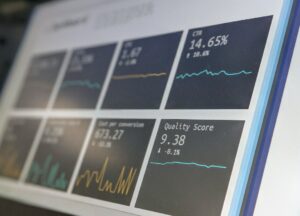Understanding Price Action Trading: A Beginner’s Guide to Forex
Price action trading is a popular and highly effective trading strategy used by many successful forex traders. It is a technique that focuses on the analysis of price movements in the market, rather than relying on indicators or other technical tools. In this beginner’s guide, we will explore the fundamentals of price action trading and how it can be used to enhance your forex trading skills.
What is Price Action Trading?
Price action trading is a trading strategy that involves interpreting and making trading decisions based on the actual price movements of a financial instrument, such as a currency pair in the forex market. It does not rely on any lagging indicators, but rather focuses on patterns, formations, and candlestick analysis to anticipate future price movements.
Price action traders believe that all the necessary information for making profitable trades is already reflected in the price chart. By studying the historical price data, traders can identify patterns and trends that can help them predict future price movements and make informed trading decisions.
The Basics of Price Action Trading
To understand price action trading, it is important to familiarize yourself with some key concepts and techniques. Here are some of the basics:
1. Candlestick Patterns: Candlestick patterns are one of the most important tools in price action trading. They provide valuable insights into market sentiment and can help traders identify potential reversals or continuations of a trend. Common candlestick patterns include doji, engulfing patterns, and hammer.
2. Support and Resistance Levels: Support and resistance levels are areas on the price chart where price has historically struggled to break through. These levels act as psychological barriers and can provide valuable information about potential entry and exit points. Traders often use support and resistance levels to set their stop-loss and take-profit levels.
3. Trend Analysis: Identifying the direction of the trend is crucial in price action trading. Traders look for higher highs and higher lows in an uptrend, and lower highs and lower lows in a downtrend. By trading in the direction of the trend, traders increase their chances of success.
4. Price Patterns: Price patterns are formations that occur on the price chart and can provide clues about future price movements. Common price patterns include double tops and bottoms, head and shoulders, and triangles. Traders often use these patterns to anticipate breakouts or reversals.
Benefits of Price Action Trading
Price action trading offers several advantages for forex traders, especially beginners. Here are some of the benefits:
1. Simplicity: Price action trading eliminates the need for complicated indicators and technical tools. It simplifies the trading process and allows beginners to focus on understanding the price movements and patterns.
2. Flexibility: Price action trading can be applied to any financial market, including forex, stocks, commodities, and cryptocurrencies. The principles and techniques remain the same, making it a versatile strategy that can be used in different trading environments.
3. Accurate Entry and Exit Points: By studying price action, traders can identify precise entry and exit points, increasing their chances of making profitable trades. This strategy allows traders to have a clear understanding of when to enter a trade and when to exit, reducing the risk of making emotional or impulsive decisions.
4. Risk Management: Price action trading emphasizes the importance of risk management. Traders can set their stop-loss levels based on support and resistance levels, ensuring that potential losses are limited. This strategy helps traders protect their capital and minimize the impact of losing trades.
Conclusion
Price action trading is a powerful strategy that can greatly enhance your forex trading skills. It offers a simple and effective way to analyze price movements and make informed trading decisions. By mastering the basics of price action, beginners can develop a solid foundation for their trading journey. However, it is important to note that price action trading requires practice and experience to become proficient. As with any trading strategy, it is recommended to start with a demo account and gradually transition to real trading once you have gained confidence and consistency.






